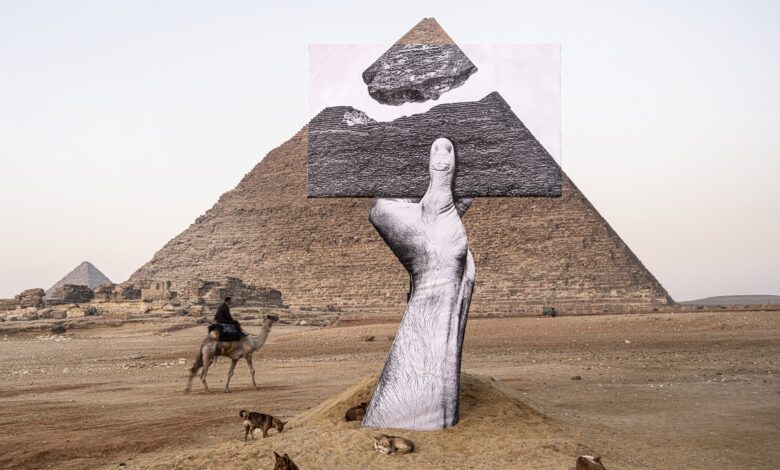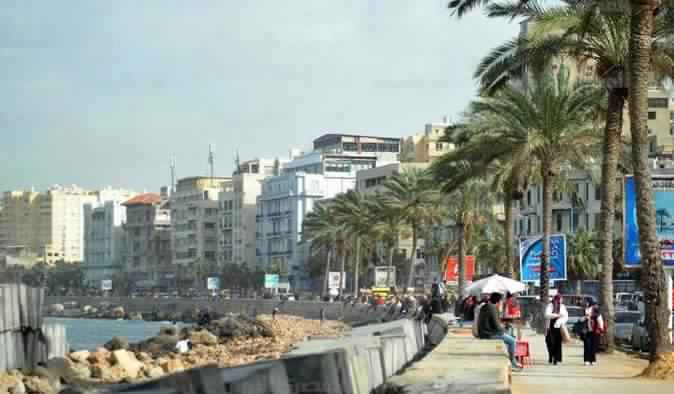
The fourth edition of Egypt’s groundbreaking art exhibition, Forever Is Now, returns this October under the patronage of UNESCO and with the support of various Egyptian ministries.
Scheduled to run from October 24th to November 16th, “Forever Is Now.04” will feature a diverse group of 12 international artists, each offering their unique perspective on the intersection of history and contemporary art.
This year’s exhibition invites audiences to become modern-day archaeologists, using the power of creativity to uncover hidden meanings within the ordinary. Through employing unconventional materials, the artists seek to express the idea that art, much like archaeology, requires a keen eye for the unexpected and a celebration of the mundane.
Featuring artists from around the globe, Forever Is Now.04 showcases a rich tapestry of cultural perspectives.
The iconic Giza Pyramids serve as both a backdrop and an integral part of the exhibition, where ancient history and modern innovation converge.
For the first time, Forever Is Now.04 will feature two AI parallel projects.
Egyptian-American artist Hassan Ragab’s innovative work, supported by Meta, explores the intersection of technology and traditional art. Additionally, Saudi artist Daniah Al Saleh’s 10-minute video project revisits the golden age of Egyptian cinema, examining its influence on Middle Eastern societies and its subtle challenges to societal norms.
These parallel projects offer a glimpse into the future of art, demonstrating how AI can enhance creative expression and how cinema shapes our collective memories.
The founder of Art D’Égypte, Nadine Abdel Ghaffar, expressed her enthusiasm for this year’s exhibition.
“We are thrilled to present the fourth edition of ‘Forever Is Now’ at the majestic Pyramids of Giza,” she said, adding that, “This year’s exhibition is particularly special as it marks the first time we are featuring artists from Asia, opening up new dialogues and connections across borders. Our concept delves into the rich narratives of our past while exploring the transformative power of contemporary art.”
Participating artists and their works:
- Chris Levine (United Kingdom): Levine’s light art installation, inspired by the Great Pyramid, invites viewers to contemplate the universal truths found within sacred geometry and astronomical ratios.
- Federica Di Carlo (Italy): Di Carlo’s nature-inspired installation at the Pyramids symbolizes the infinite possibilities of life and the unseen energies that connect us to the cosmos.
- Ik-Joong Kang (South Korea): Kang’s intricate mosaics, composed of thousands of small canvases, represent the collective memories that shape our present, drawing parallels between the ancient and modern worlds.
- Jake Michael Singer (South Africa): Singer’s large-scale installations explore the tension between nature and urban environments, reflecting on the juxtaposition of the ancient desert and modernity.
- Jean Boghossian (Belgium/Lebanon): Boghossian’s burnt canvases and sculptures represent the transformative power of flame, symbolizing both destruction and creation. His work at the Giza Pyramids echoes the enduring spirit of rebirth.
- Jean-Marie Appriou (France): Appriou’s dreamlike sculptures blend mythology and contemporary concerns. His clay boat at the Giza Plateau, a symbol of transitions through time, features a child character representing the connection between past, present, and future. The evolving nature of the artwork reflects the passage of time as the Nile clay cracks and changes.
- Khaled Zaki (Egypt): Zaki’s sculptures merge ancient Egyptian forms with modern abstraction, resonating with the timelessness of the Pyramids. His work embodies a fusion of past and present in both design and material reality.
- Luca Boffi (Italy): Boffi’s use of grids as optical devices explores the intersection of natural and artificial environments. His work engages communities in a shared exploration of space and memory, transforming the Giza Pyramids into a canvas for collective action.
- Marie Khouri (Canada/Lebanon): Khouri’s flowing arabesque forms spell out universal messages of peace and unity, reflecting a deep connection to both her Egyptian heritage and her global journey.
- Shilo Shiv Suleman (India): Suleman’s immersive installations, inspired by the blue lotus flower, merge Eastern and Western symbols to create a space for connection and peace while blending ancient Egyptian and Indian motifs.
- STUDIO INI by Nassia Inglessis (Greece): Inglessis’ sculptures take form and transform through human interaction. Her sculpture at Giza invites viewers to engage physically and transform it, becoming an integral part of its liquid solidity. This journey into the past of the Ancient Egyptians helps form a vision of the monument of the future that unites the Human, the Technological, and the Elemental.
- Xavier Mascaro (Spain/Latin America): Mascaro’s works integrate architecture, design, and sculpture, often interacting with the environment. His contribution to the exhibition at Giza plays with perspectives and perceptions, making the viewer question the boundaries between the old and the new.




